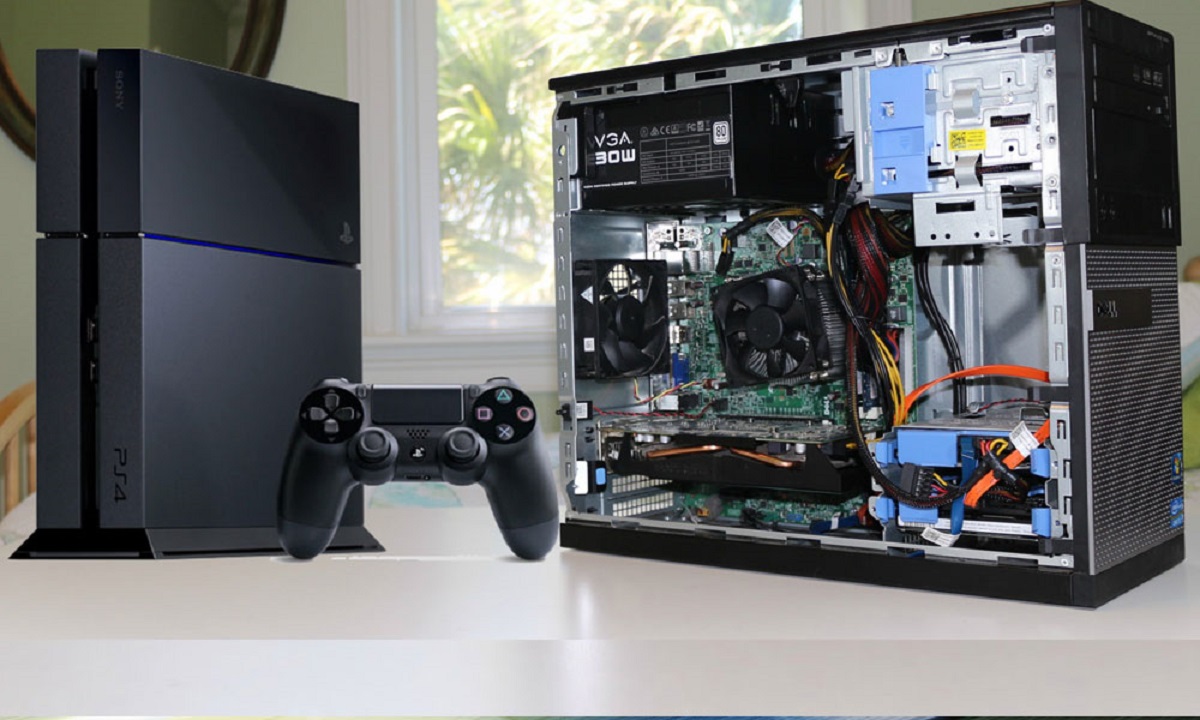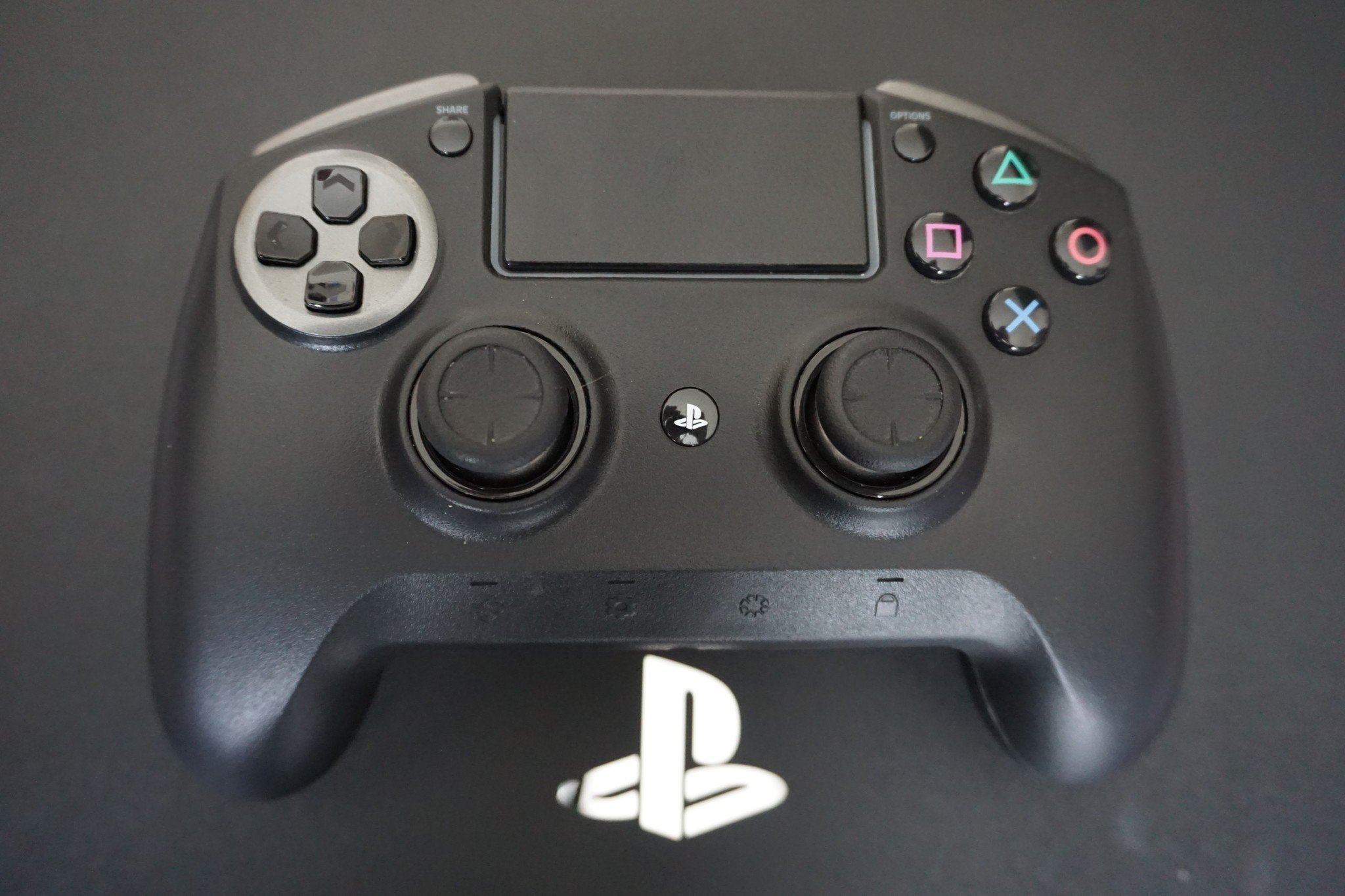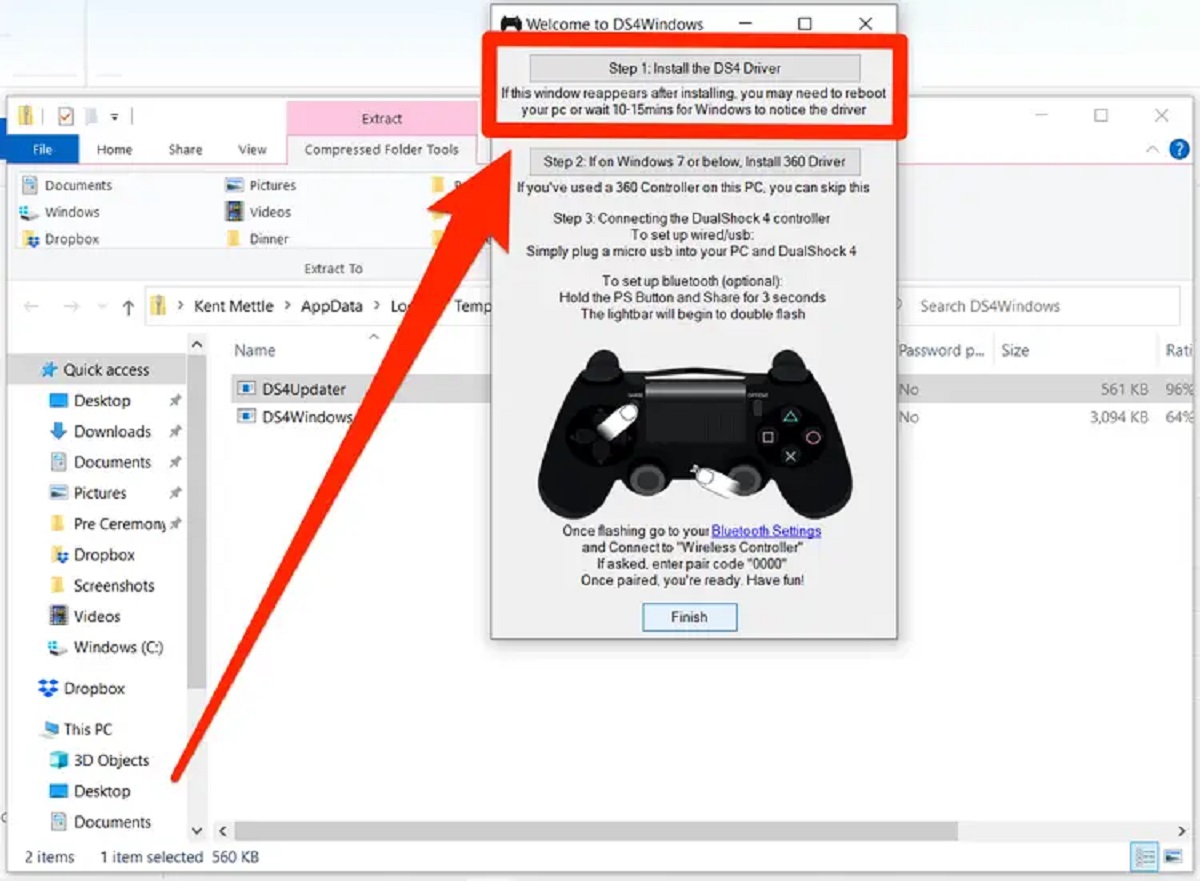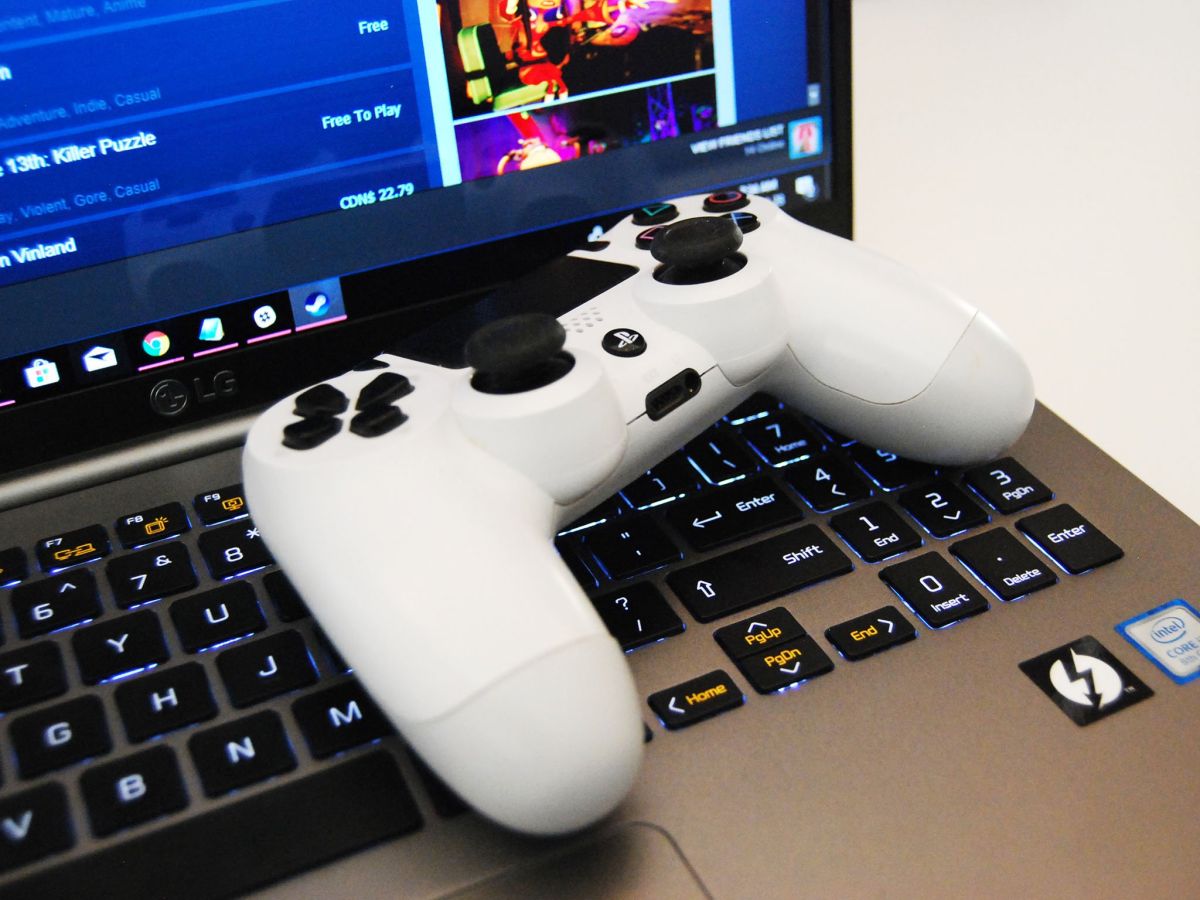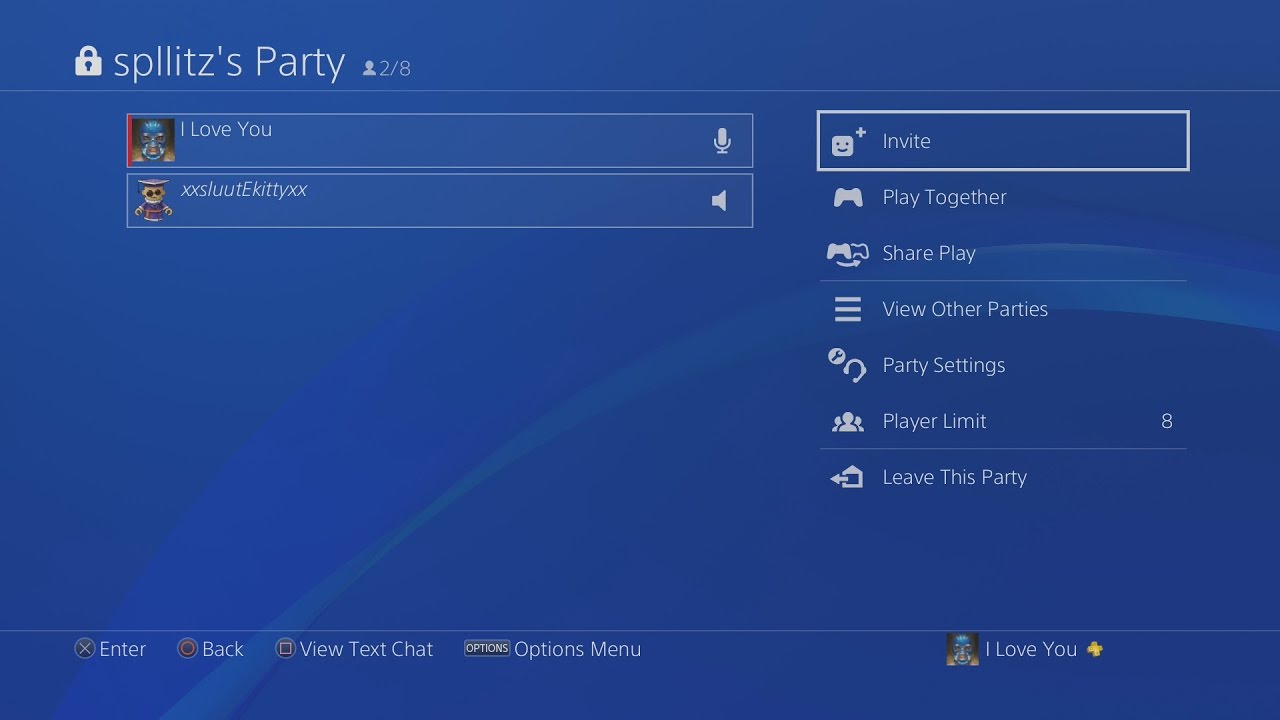Introduction
Are you a gaming enthusiast who loves playing PlayStation 4 (PS4) games but wishes you could play them on your PC? Well, you’re in luck! With the advancement of technology, there is now a way to stream and play your favorite PS4 games on your PC. This brings the convenience of gaming on a larger screen, utilizing the power of your PC, and the flexibility to play wherever you want.
In this guide, we will walk you through the step-by-step process of playing PS4 games on your PC. We’ll cover the system requirements, the software you’ll need, the setup process, and even some troubleshooting tips along the way. So, if you’ve always dreamt of gaming on your PC with a PS4, let’s dive in and make it a reality!
Before we get started, it’s important to note that the method we’ll be discussing involves using Remote Play, a feature developed by Sony. This allows you to stream your PS4 gameplay to your PC over a local network, so you’ll need both your PS4 and PC to be connected to the same Wi-Fi network for this to work.
Now, without further ado, let’s move on to the first step: checking the system requirements to ensure your PC is capable of handling PS4 game streaming.
Getting Started
Before diving into the process of playing PS4 games on your PC, there are a few things you’ll need to get started. Here’s a quick overview:
- PS4 Console: Of course, you’ll need a functioning PS4 console to be able to stream and play the games on your PC. Make sure it’s connected to a TV or monitor and is turned on.
- PC: You’ll need a personal computer running on Windows 8.1 or later, or macOS 10.10 or later. Ensure that your PC meets the minimum system requirements for Remote Play compatibility.
- Wi-Fi Network: Both your PS4 and PC need to be connected to the same Wi-Fi network for Remote Play to work. Ensure that your network connection is stable and has sufficient bandwidth for smooth streaming.
- Controller: To enjoy the PS4 games on your PC, you’ll also need a compatible controller. You can use a DualShock 4 controller or a compatible third-party controller to play the games.
- Software: Lastly, you’ll need the Remote Play software installed on your PC. You can download it from the official PlayStation website for free, so make sure to get the latest version compatible with your operating system.
Once you have all the necessary hardware and software ready, you’re set to begin the setup process. In the following steps, we’ll guide you through the configuration of both your PS4 console and PC to enable Remote Play and connect them seamlessly.
In the next section, we’ll explore the specific requirements and steps to ensure your system is suitable for PS4 game streaming. Let’s check out the system requirements in more detail.
Step 1: System Requirements
Before you begin setting up PS4 game streaming on your PC, it’s crucial to ensure that your system meets the necessary requirements. Here’s what you’ll need:
- PC: Your computer should have a minimum of a Windows 8.1 or later operating system if you’re using a Windows PC. If you’re using a macOS, it should be running on macOS 10.10 or later.
- Processor: Your PC should have an Intel Core i5-560M processor or higher, if possible. The higher the processor capabilities, the smoother your gameplay experience will be.
- RAM: Ensure that your computer has at least 2GB of RAM available. This will help in handling the streaming process and running the Remote Play software smoothly.
- Graphics Card: While most modern PCs have integrated graphics cards, it’s recommended to have a dedicated graphics card with at least 1GB of VRAM for better visuals during gameplay.
- Network Connection: For optimal streaming performance, it’s essential to have a stable and high-speed internet connection. A wired connection is preferred, but a strong Wi-Fi connection can also work well.
- Controller: You’ll need a compatible controller to play the games on your PC. The DualShock 4 controller is the official PS4 controller and is highly recommended, but other officially supported controllers will work too.
It’s important to note that the system requirements mentioned are the minimum specifications recommended by Sony for a satisfactory gaming experience via Remote Play. If your PC exceeds these requirements, you can expect even better performance and visual quality.
Once you’ve verified that your PC meets the system requirements, you’ll be ready to move on to the next step: setting up the Remote Play software on your PC. This will allow you to stream and enjoy your favorite PS4 games on your computer, bringing the console gaming experience to your desktop or laptop.
In the following steps, we’ll guide you through the process of installing the necessary software and configuring your PS4 and PC. Let’s proceed to Step 2: Software for Remote Play.
Step 2: Software for Remote Play
In order to play PS4 games on your PC, you’ll need the Remote Play software installed. This software allows you to stream your PS4 gameplay to your PC over a local network. Follow these steps to download and install the Remote Play software:
- Open your preferred web browser and visit the official PlayStation website.
- Go to the “Remote Play” section, usually found under the “PlayStation” or “Support” tab.
- Choose the version of the Remote Play software that matches your PC’s operating system (Windows or macOS).
- Click on the download link and save the installation file to your computer.
- Once the download is complete, locate the installation file and double-click on it to start the installation process.
- Follow the on-screen instructions to install the Remote Play software on your PC.
After the installation is complete, the Remote Play software will be ready to use. It’s worth noting that you may need to restart your computer after the installation process for the software to work correctly.
Now that you have the Remote Play software installed, you’re one step closer to playing PS4 games on your PC. In the next step, we’ll guide you through the process of setting up your PS4 console to enable Remote Play. Let’s move on to Step 3: PS4 Setup.
Step 3: PS4 Setup
Before you can start playing PS4 games on your PC, you need to configure your PS4 console to enable Remote Play. Follow these step-by-step instructions:
- Turn on your PS4 console and navigate to the main menu.
- Using your controller, scroll over to the “Settings” option.
- Select “Remote Play Connection Settings” from the list of settings.
- Enable the “Enable Remote Play” option by checking the box next to it.
- You may also want to enable the “Connect Directly with PS Vita/PS TV” option if you plan on using Remote Play with those devices in the future.
- Next, go back to the Settings menu and select “Power Save Settings”.
- Ensure that the “Stay Connected to the Internet” option is enabled. This will ensure that your PS4 remains connected to the internet even in Rest Mode.
- Now, go back to the main menu and select the “Settings” option once again.
- Scroll down and select “Account Management” from the menu.
- Select “Activate as Your Primary PS4” and follow the on-screen instructions.
With these settings adjusted, your PS4 console is now ready for Remote Play. Keep your console turned on and connected to the same Wi-Fi network as your PC for the best results.
Now that your PS4 is set up, let’s move on to configuring your PC for Remote Play. In the next step, we’ll guide you through the necessary steps to prepare your computer for PS4 game streaming. Let’s proceed to Step 4: PC Setup.
Step 4: PC Setup
Once you have completed the PS4 setup, it’s time to prepare your PC for Remote Play. Follow these steps to ensure your computer is ready:
- Make sure your PC is connected to the same Wi-Fi network as your PS4.
- Launch the Remote Play software that you previously installed on your PC.
- When prompted, sign in to your PlayStation Network (PSN) account. If you don’t have one, create a new account.
- The Remote Play software will automatically search for your PS4 console. If it doesn’t find it, you can manually enter the IP address of your PS4.
- Once the software detects your PS4, click on “Start” to begin the connection process.
- The software will establish a connection with your PS4 and display your PS4’s screen on your PC.
- You can now use your PC as a display for your PS4 and play PS4 games using the connected controller.
During remote play, you may experience some lag or latency, depending on the speed and stability of your network connection. If you’re facing any issues, you can experiment with different network settings or move closer to your Wi-Fi router for a stronger signal.
Additionally, within the Remote Play software, you can adjust the resolution and frame rate settings to optimize the streaming quality based on your PC’s capabilities and network conditions. Explore these settings for the best streaming experience.
Congratulations! You have successfully set up your PC for PS4 game streaming using Remote Play. Now you can enjoy playing your favorite PS4 games on your computer. In the next step, we’ll guide you through the process of configuring the controls on your PC. Let’s move on to Step 5: Connecting the PS4 and PC.
Step 5: Connecting the PS4 and PC
Now that you have your PS4 and PC set up for Remote Play, it’s time to connect them and start playing your favorite PS4 games on your computer. Follow these steps to establish the connection:
- Ensure that both your PS4 and PC are connected to the same Wi-Fi network.
- Launch the Remote Play software on your PC.
- Once the software is open, click on the “Start” button to search for your PS4 console.
- The software will automatically detect your PS4 and establish a secure connection between your PC and the console.
- You will see your PS4’s screen displayed on your PC monitor.
- Grab your compatible controller and start playing your favorite PS4 games using the connected controller.
During gameplay, the Remote Play software will handle all the inputs from your controller and display the game on your PC monitor in real time. This allows you to enjoy the console gaming experience on a larger screen while utilizing the power of your PC.
If you encounter any connection issues, make sure that both your PS4 and PC are connected to the same Wi-Fi network and that there are no network interruptions or interference. You can also try restarting your PS4 and PC to establish a fresh connection.
With the PS4 and PC successfully connected, you can now dive into your gaming session and enjoy playing PS4 games directly on your computer. In the next step, we’ll guide you through the process of configuring the controls on your PC. Let’s move on to Step 6: Configuring Controls.
Step 6: Configuring Controls
After successfully connecting your PS4 and PC, it’s essential to configure the controls to ensure a seamless gaming experience. Follow these steps to configure the controls on your PC:
- Ensure that your PS4 controller is connected to your PC via a USB cable or Bluetooth.
- Open the Remote Play software on your PC.
- In the software interface, click on the “Settings” button.
- In the settings menu, navigate to the “Controllers” tab.
- Select the option to “Enable the Wireless Controller” or “Use the Wired Controller” based on how you have connected your controller to your PC.
- Click on “OK” to save the changes.
Once you have configured the controller, you can now start using it to play PS4 games on your PC. The controls on your PS4 controller should map directly to the corresponding keys on your PC keyboard or mouse, allowing you to play the games with ease.
If you prefer using a different controller, such as a third-party controller, make sure it is compatible with the Remote Play software and follow the manufacturer’s instructions for connecting and configuring it with your PC.
It’s worth noting that some games may require specific controller settings or mappings. In such cases, you can explore the in-game options or consult the game’s manual or online resources to configure the controls according to your preference.
Now that you have successfully configured the controls, you’re all set to immerse yourself in the world of PS4 gaming on your PC. In the next step, we’ll provide some troubleshooting tips and additional tips to enhance your Remote Play experience. Let’s move on to Step 7: Troubleshooting and Tips.
Step 7: Troubleshooting and Tips
While playing PS4 games on your PC using Remote Play is generally a smooth experience, you may encounter some issues or want to optimize your gameplay. Here are some troubleshooting tips and additional tips to enhance your Remote Play experience:
Troubleshooting:
- Ensure a Stable Network Connection: Make sure both your PS4 and PC are connected to a stable network with a strong Wi-Fi signal. A poor connection can result in lag or disconnections during gameplay.
- Restart Your Devices: If you encounter any connectivity issues, try restarting your PS4, PC, and router to establish a fresh connection.
- Check Firewall and Antivirus Settings: Ensure that your firewall or antivirus software is not blocking the Remote Play software or causing any network connectivity issues.
- Update Software: Keep your PS4, PC, and Remote Play software up to date with the latest firmware and software updates to ensure compatibility and improved performance.
Tips to Enhance Your Remote Play Experience:
- Optimize Network Settings: If possible, connect your PS4 and PC to your router using an Ethernet cable for a more stable and reliable connection.
- Adjust Resolution and Frame Rate: Experiment with different resolution and frame rate settings within the Remote Play software to find the optimal balance between performance and visual quality.
- Use a Controller Stand: Invest in a controller stand to securely hold your PS4 controller while gaming on your PC for added comfort and convenience.
- Play with Headphones: Use headphones or a gaming headset while playing to fully immerse yourself in the audio experience and avoid disturbing others.
- Optimize PC Performance: Close any unnecessary background applications or processes on your PC to free up system resources and ensure optimal performance during gameplay.
By following these troubleshooting tips and implementing the additional tips, you can enhance your Remote Play experience and enjoy seamless gaming on your PC with your favorite PS4 games.
Now that you’re equipped with troubleshooting knowledge and helpful tips, you’re ready to embark on your gaming adventure. Enjoy playing PS4 games on your PC and make the most of the newfound flexibility and convenience.
Conclusion
Congratulations on successfully setting up and playing PS4 games on your PC using Remote Play! This guide has provided you with a step-by-step process to enable PS4 game streaming, from checking system requirements to configuring controls. By following these steps, you have unlocked the convenience and flexibility of playing your favorite PS4 games on a larger screen and utilizing the power of your PC.
Throughout the setup process, you ensured that your PC met the necessary requirements, downloaded and installed the Remote Play software, configured your PS4 console, connected your devices, and optimized the controls. By troubleshooting any potential issues and implementing helpful tips, you can enhance your Remote Play experience and enjoy seamless gaming.
Remember to maintain a stable network connection, keep software updated, and make use of various settings available within the Remote Play software to optimize your streaming quality. Additionally, be sure to take advantage of tips such as using a controller stand, playing with headphones, and optimizing your PC’s performance to further enhance your gaming experience.
Now it’s time to dive into your gaming session and make the most of your PS4 game library on your PC. Enjoy the immersive graphics, engaging gameplay, and the convenience of playing on a platform of your choice.
Happy gaming!







